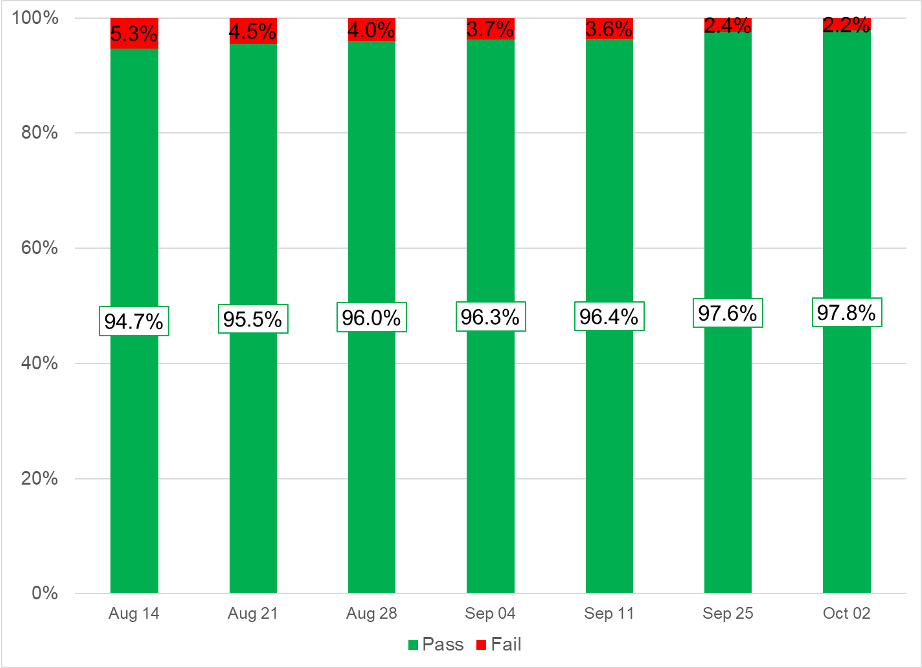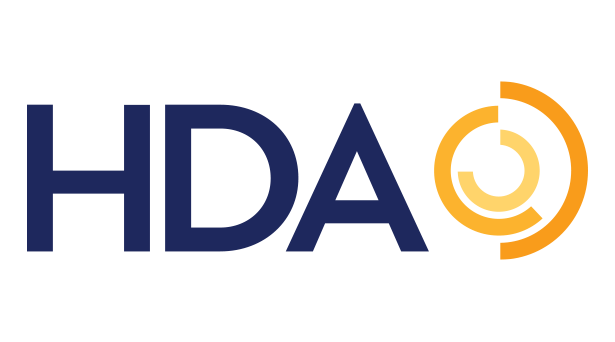Verification Network Update: Less than 60 Days Remain
Industry and service providers continue to work to implement the Drug Supply Chain Security Act’s (DSCSA) serialized saleable return milestone. With the end of FDA-granted enforcement discretion ending on November 27, 2020, and the industry simultaneously responding to COVID-19, it is all hands on deck to reach the compliance finish line.
As outlined in HDA’s pilot report, there are two preferred ways companies can meet this milestone — either sending data via EPCIS or participating in the verification network. According to forthcoming data from the HDA Research Foundation, about a third of companies plan to send serialized data via EPCIS and 86 percent plan to employ the verification network.
Trading partners continue to work independently to onboard and ensure successful deployment of EPCIS. Setting up a verification network that did not previously exist, on the other hand, has been a challenging task and required industry collaboration. HDA has been facilitating activity around the network again since reconvening the task force last fall to come up with a plan for enforcement discretion. However, no one could have predicted the supply chain would be responding to a global pandemic within a matter of months.
COVID-19 has certainly impacted the ability to implement the task force’s original plan, and pushed timelines further out than originally anticipated. Additionally, virus-related restrictions have impeded the ability to conduct on-site work and training at distribution centers. Companies have (and continue to) adjust plans as the crisis evolves.
Despite these constraints, significant progress has been made over the past 10 months on this complex project, including:
- Meetings with the FDA in November, March and August to keep the Agency updated on progress and challenges.
- Weekly meetings with service providers to address issues with testing, development of three common test script documents, and a performance testing plan.
- Three rounds of request/response testing, obtaining a 97 percent passing test rate on verification requests and responses.
- The addition of eight additional providers, for a total of 15 total providers, and three new service provider entrants.
- Creation of a “minimum technical competence to test” document to simplify and scale the participation of new service provider entrants.
- Launching an ATP pilot around verifiable credentials and digital identities, building on the requirements of industry and the self-attestations of service providers around the ATP requirements and their security approaches, to develop potential approaches for a more automated solution to ensure only authorized trading partners are requesting and responding to requests.
- Regularly scheduled discussions with industry on progress and conversations on critical issues like ATP, verification responses, performance testing and other issues that require end user input.
The Next Two Months
With the November 27 deadline rapidly approaching, industry and service providers are working on a number of final items. First, service providers started testing in late spring. The following chart illustrates testing trends over the last seven weeks. New entrants or those service providers who are still doing development will need to test request responses. For most participants who have been participating and successfully tested request and/or response functionality, their focus will shift to lookup directory and performance testing.

Lookup Directory Testing
The Lookup Directory, a necessary and critical component of the verification network was previously tested. However, as service providers began to hear additional use cases from industry, it became clear that these use cases needed to be added to the test script document to sufficiently capture the complexity of mergers, acquisitions, divestitures and business relationships that exist within industry. The third round of test scripts includes the most complex scenarios and testing started across service providers during the week of September 28.
Performance Testing
Performance testing, or “load testing” of the network, is another important step about to begin. Participating service providers have been working on a plan for several weeks. It was presented to industry on September 14 for comment and a final plan was published on September 18.
Working with wholesalers, the service providers will be executing a series of tests to stress the system and determine at what rate of requests per second the network breaks down. Service providers will make 200 product identifiers available for testing and pair with another VRS provider. Concurrent requests, starting at 10 and increasing to 100, will be made randomizing those product identifiers for 300 seconds. These numbers were chosen based on numbers provided by wholesale distributors and their daily peak volumes.
Service providers will document the total requests, failure count, average response and request per second. Results will be made available to industry anonymously. The goal is to understand how the system could function in a production environment under real-world conditions, as well as to stress the system to understand where throughput could be challenged to a manage network performance expectations.
Maximizing the Next Two Months
The next two months will be crucial for the pharmaceutical supply chain. Below are a few recommendations for manufacturers and distributors as enforcement discretion ends:
- Talk with your trading partners. If you have not identified points of contact, shared what your approach to serialized saleable returns will be, or indicated your expectations around handling verification responses, now is the time to do so. Many distributors have been sending out letters to their trading partners — continue to watch out for these communications.
- Check your data. Data organization and potential glitches or false responses remain the largest concerns. Learning lessons from the EU, data issues continue to be a cause for “alerts” along with barcode quality and scanning issues. Check the completeness of your serialization data. If you have gaps, know how you will handle those with your trading partner and consider how to mitigate the risk.
- Complete your implementation plan. Manufacturers and distributors have been working to train teams, check data, configure scanners, upload GTINs, resolve issues with their service providers and develop processes. Continue to do this and determine any gaps that exist.
HDA’s upcoming Traceability Online Seminar (Nov 2–4) will feature an updated on the latest efforts to comply with this milestone, among other sessions. To register, click here. For questions or additional information, contact Jaidalyn Rand.
